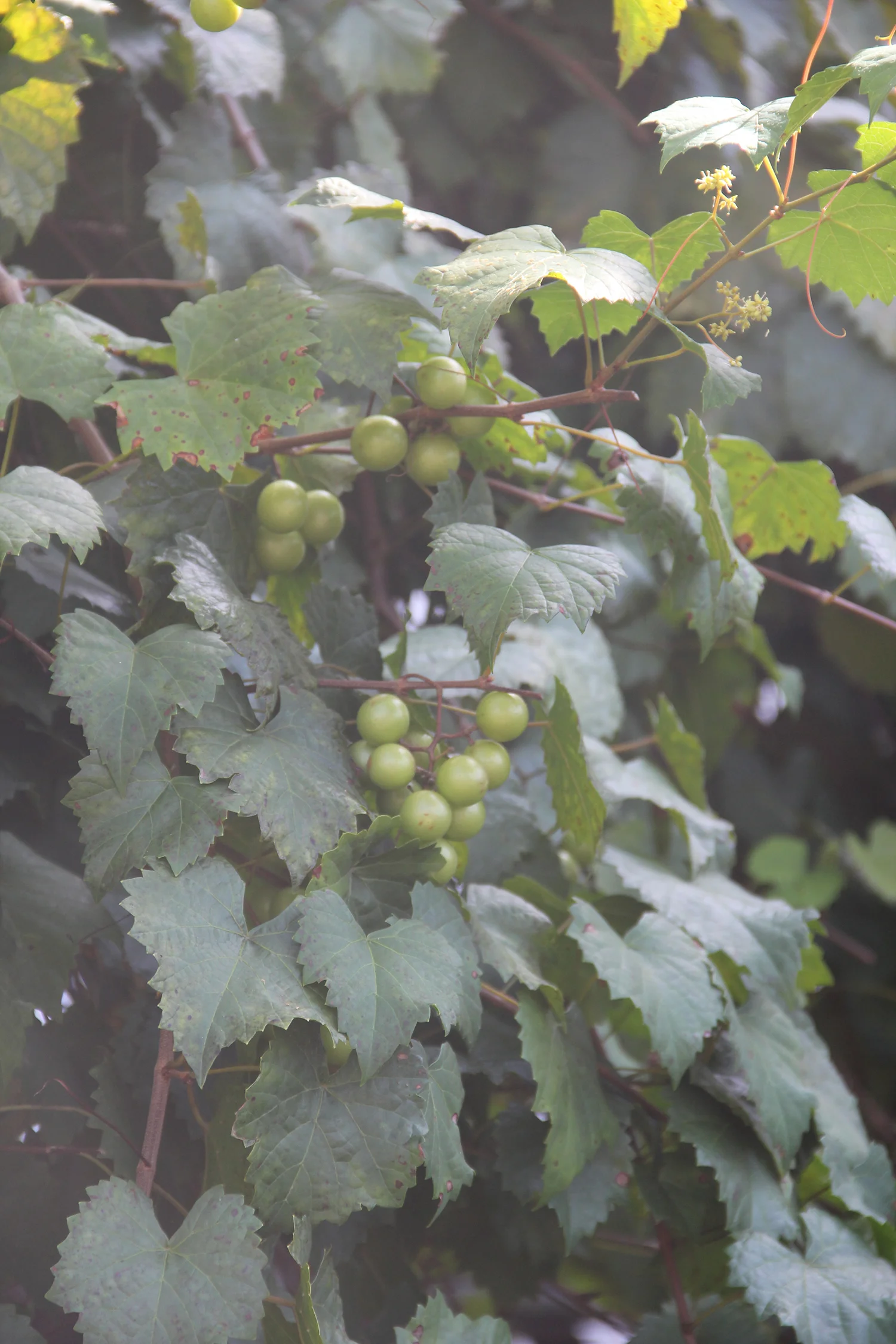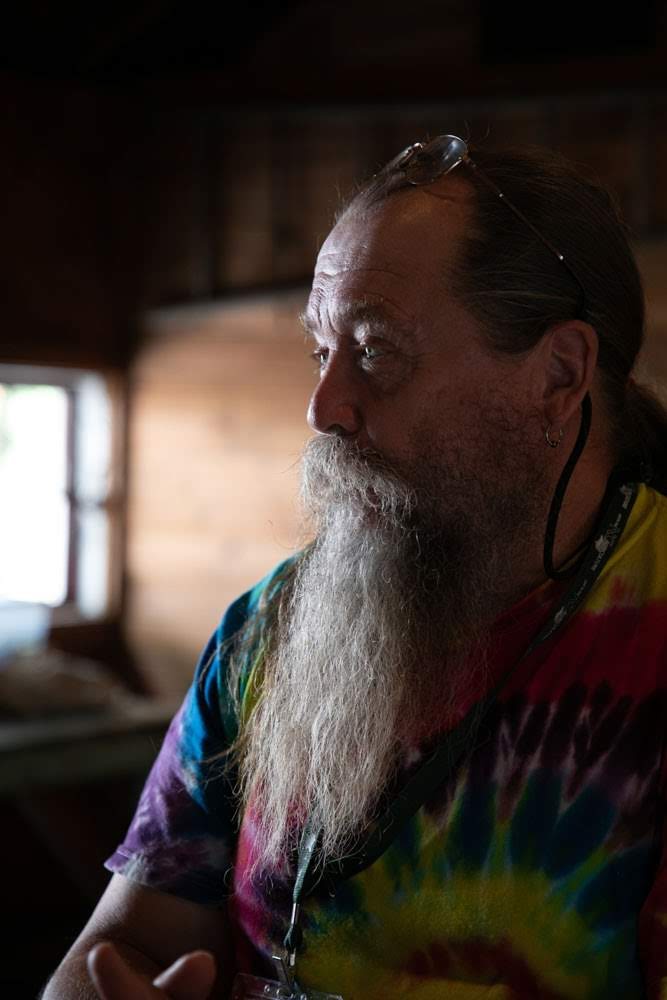Most of us tend to think of Spring as the best time to plant. For some things, that is true, but our hot (and often dry) Summers tend to put a lot of stress on Spring planted specimens. So why not plant all kinds of trees, shrubs, vines, and perennial flowers? When you plant in the fall, you give plants a 7 or 8-month head start on the hot, dry weather. Roots are growing during that time, even if other parts of the plant are dormant. This allows the plants to be well on their way to being established in the landscape before they have to face the stresses of Summer weather. So, now’s the time to plant!
Last week I posted a list of great plants to use to create an edible landscape; a yard/garden/orchard hybrid, if you will. Nearly every single one of them is a perennial plant of some sort, which means they continue to grow over the years. Some, in fact, live quite a long time. In fact, the oldest known cultivated muscadine grapevine was planted in the 1500’s on the Outer Banks Of NC!
Native grapes such as muscadines are hardy and easy to grow here in Matthews.
One of the best things to plant in the fall is a tree, preferably a fruit tree. My preferred method of tree planting is fairly simple. Dig a hole as deep as the root ball of your plant is thick, and twice as wide. For example, if you buy an apple tree in a “3 gallon” container, the root ball will be approximately 10” wide and 14” tall. So you’ll need to dig a hole 20” wide and 14” deep. Remove the plant from the container, and loosen the roots from the tight ball they grew in while in the container. This allows the plant’s roots to spread out faster. Fill the planting hole with 3-4” of native soil, and firm it a bit. This will raise the top of the root ball above the surrounding grade, and lessen the settling of the soil. In our clay soils, you want to plant most things a little high to prevent root and crown rots caused by rainwater puddling around tree trunks. Set the plant into the hole, and backfill with native soil. You might irrigate the soil and root ball when about half the planting hole is filled. Continue backfilling, and fill the planting hole up to the top of the root ball. Make sure the root flare (the area of a tree trunk that widens into the root system) is visible just above the soil. You can water a bit more, then add your preferred organic mulch. This simple method should get your tree off to a fine start, and a long life.
Fruit trees blend seamlessly into yards.
If you want to learn more about fall planting, join me at Renfrow Farm next week for my class on “Edible Landscaping”. The cost is $20 per person.
Edible Landscapes, Tuesday, October 9, 6:30-8:30 PM * Renfrow Farm, 409 W Charles Street, Matthews, NC * Details and registration here.
Remember to enjoy your garden, because THAT’S what makes you a Successful Gardener!!





